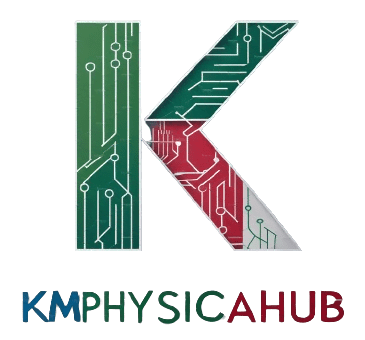Physics Through the Centuries: The Key Milestones and Discoveries
Ancient Physics
The following article by us covers the evolution of physics, from ancient times to the contemporary physics.
Astronomy, optics, and mechanics were have been probably the most influential fields for the elements, which formed basis for the future physical science. These disciplines were methodologically united through the study of geometry.
Greek Philosophers:
-
Thales of Miletus
In the Archaic period of ancient Greece (c.650–480 BCE), pre-Socratic philosophers such as “Thales of Miletus” started questioning supernatural causes for natural phenomena. Thales believed that there is always an efficient and natural reason for occurrence of any event. He also explored the properties of water and magnetic force.
Some of the famous philosophers of the pre-Socratic period were Thales of Miletus; he worked in numerous areas. Here are some key aspects of his work:
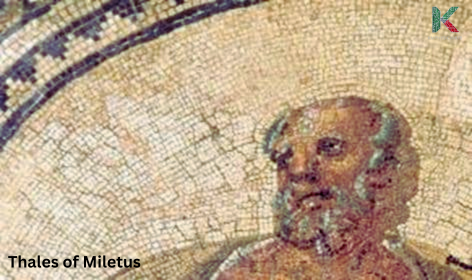
- Cosmology and Metaphysics:
Thales argued about the existence of a single primitive matter or substance known as the arche from which all other entities emerged. He theorized that this substance was water. His cosmology posited that the Earth floated on water, and he sought natural explanations for phenomena rather than relying on mythology.
- Mathematics:
Thales is known for Thales’s theorem, which relates the angles in a right triangle to the lengths of its sides. He also worked on the intercept theorem, which can be called Thales’s theorem as well.
- Scientific Contributions:
Thales was an astronomer who reportedly predicted weather patterns and a solar eclipse. He identified the location of the constellation Ursa Major and calculated the time of solstices and equinoxes. Thales was able to measure heights of pyramids as well as distance of ships for shore. He diverted the Halys River as an engineer.
- Legacy:
Thales was one of the Seven Sages of Ancient Greeks that were known to be wise. His shift from mythological explanations to natural philosophy paved the way for scientific inquiry.
While Thales’s writings have not survived, his influence on early Greek thought remains significant. His focus on rational and logical thinking laid the groundwork for future philosophers and scientists.
-
Heraclitus:
Heraclitus emphasized change as the fundamental law governing the universe, while
“Parmenides” contemplated the role of time.
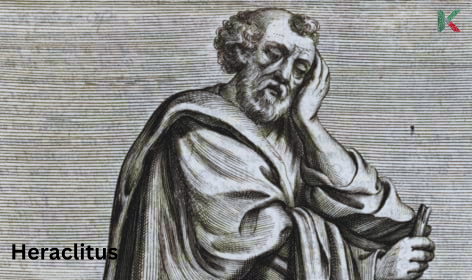
A pre-Socratic Greek philosopher, Heraclitus of Ephesus (c. 535–475 BCE) said some quite differing things. Let’s explore his key ideas:
- Unity of Opposites:
Heraclitus believed that opposites are interconnected and essential for understanding reality. For instance, health and disease define each other, and good and evil are related. He famously stated, “Everything flows” (Greek: πάντα ρει, panta rhei). This emphasizes the constant change and flux in the world.
- Concept of Change:
Heraclitus believed that the world is in constant flux or ‘becoming’ but never in ‘being’. Their philosophy was different from that of Parmenides who was one of those who maintained that there was a fixed reality. This sort of dynamic perspective can be seen in his motto, which is “No man ever steps in the same river twice.”
- Fire as the Arche:
Heraclitus considered fire (pyr) as the fundamental substance (arche) underlying everything. Fire both creates and destroys, symbolizing transformation. This choice of arche aligned with earlier Milesian philosophers (Thales, Anaximander, and Anaximenes), each proposing a different primary element.
- The Logos:
Heraclitus introduced the concept of the logos, which represents reason, order, and structure in the world. The logos connects all things, providing coherence. It’s the universal principle through which natural events occur.
- Harmony in Strife:
Despite the world’s constant change, Heraclitus saw harmony within apparent conflict (strife). He believed that justice emerges from this tension, and the world maintains balance through opposing forces.
- Cryptic Style:
Heraclitus’s surviving works consist of cryptic epigrams and fragments. His aphoristic style earned him the epithets “the dark” and “the obscure.” He was considered melancholic and misanthropic, contrasting with Democritus, known as “the laughing philosopher.”
In summary, Heraclitus’s legacy lies in his exploration of change, unity, and the dynamic nature of existence. His influence reverberates through the ages, shaping Western philosophical thought.
-
Aristotle:
Aristotle, a pupil of Socrates and Plato, regarded the study of behaviour of physical body as possible for determining the laws governing the nature. His written works are on; Physics, metaphysics, and biology areas of specialization.

The concept of physics as theorized by Aristotle is quite interesting, especially with the dawn of Physics as a scientific subject. Let’s explore some key concepts:
- Elements and Spheres:
Ancient philosophers, especially Aristotle, have argued that all natural things, living and nonliving, undergo certain transformations and are controlled by certain laws. He envisioned the universe as comprising concentric spheres:
- There was the Earth at the center with spheres on around.
- The terrestrial sphere contained four elements: the four elements which were earth, air, fire, and water and which were considered to be easily changing and decaying.
- While the celestial spheres, on the other hand, were made out of what was considered the fifth element — aether, which was in a way, permanent and everlasting.
- Natural Motions:
For Aristotle, anything that is created from the earth and water will have a tendency of falling down while those created from air and fire have the option to fall down or to rise. The speed of motion is proportional to weight of the object and density of the medium. Thus, Aristotle proposed that a vacuum does not exist because speeds would reach to infinity.
Four Causes:
Aristotle described four causes or explanations of change:
- Material cause: The substance or matter from which something is made.
- Formal cause: The essential structure or design of an object.
- Efficient cause: The agent or force responsible for bringing about change.
- Final cause: The purpose or goal toward which something tends.
These causes provided a comprehensive framework for understanding natural phenomena.
- Biology and Observation:
Aristotle’s biology relied on observing natural kinds and their relationships. He didn’t conduct modern experiments but gathered data and made hypotheses based on observations and dissection. His focus was on understanding the basic kinds of living organisms and their characteristics.
In summary, Aristotle’s physics emphasized empirical observation, logical analysis, and a teleological approach to nature. While his principles weren’t based on controlled experiments, they laid the groundwork for later scientific thought.
Classical Physics (6th–19th centuries):
-
Antiquity and Greek Philosophers:
Pre-Socratic philosophers, like Aristotle of course, contributed substantially to understanding of the mechanics. As for the speed at which objects descend, Aristotle provided the following write that speed is directly proportional to specific weight and inversely proportional to the quantity of the medium in which an object falls or the density of the material through which its motion progresses, whether this is air or water. To the above, he also added Natural motion- objects tend to move to where they belong (their natural place) and Forced motion.
Even though Aristotle was not expressing the law of inertia in evident words, we can see he came close to it by pointing out that objects that have been put in motion will likely remain that way unless an external force stops or slows them down.
-
Work of Galileo:
Galileo Galilei revolutionized physics by challenging established beliefs t observation and experimentation. He gave evidence through experiments that all objects fall at the same equal rate in a vacuum upon being subjected to the force of gravity, independently of their weights. He came up with the idea of inertia whereby an object once in motion will remain in motion. His observations like moons of Jupiter and phases of Venus helped him make compelling argument for a heliocentric solar system. He provided methods of experimentation and quantitative analysis that formed the foundation for today’s scientific method.
-
Newtonian Mechanics:
The critical turning point in classical mechanics occurred with Isaac Newton’s publication of his laws of motion and the development of calculus in 1678. His work provided a comprehensive framework for understanding motion, forces, and celestial mechanics.
Newton’s three laws provided the base for classical mechanics:
- First Law (Law of Inertia): An object continues in a state of rest or in a state of uniform motion in a straight line unless a net external force is applied on it.
- Second Law: Acceleration is directly proportional to the net force exerted on an object and inversely proportional to its mass.
- Third Law: To each action there is an equal and opposite reaction.
These laws gave a new dimension as to how things move and laid the ground work for future discoveries.
-
Analytical Mechanics and Variational Principles:
Over the next two centuries, analytical tools in mechanics evolved significantly. In particular, the theories of Hamiltonian mechanics and the action principles (Equl, Lagrange, Hamilton and Jacobi) were essential. These concepts were the groundwork of the modern physics such as the quantum mechanics and the relativity theories, etc. Variational methods allowed physicists to describe physical systems using principle of least action, minimizing the action integral along a trajectory.
Some Practical Applications of Classical Mechanics:
Classical mechanics, despite being an approximation, has numerous practical applications across various scientific and engineering domains. Let’s explore some of them:
- Astronomy:
The fields and disciplines of classical mechanics enable us to explain the motion of stars, planets, and other cosmic objects. It brings into understanding various worldly occurrences such as the revolution of planets, forces of gravity, and movement of galaxies.
- Molecular and Nuclear Physics:
In molecular collisions and nuclear reactions, classical mechanics provides a foundation for understanding particle trajectories and energy transfer. It helps describe the behavior of atomic and subatomic particles.
- Geology and Seismology:
Seismic waves during the earthquake is a mechanism that is based on the classical mechanics. Thus, the concepts that govern the movement of the tectonic plates and the forecasting of earthquakes are rooted on the principles of the classical mechanics.
- Engineering:
In Structural engineering, the behavior of the bridges, buildings, and other structures are explained with the help of classical mechanics. Engineers also use principles of statics and dynamics to help design good and safe structures.
- Fluid Dynamics:
Classical mechanics is also applicable to the study of fluid dynamics, for example to study air resistance forces, water flows, and aerodynamics. It assists engineers in designing efficient pipelines for transporting oil and natural gas, wings for aircrafts, and turbines for energy generation.
- Mechanical Systems:
Classical mechanics facilitates engineering and functioning of mechanical elements such as engines, gears and pulleys. It guarantees that equipment and machinery operate optimally.
- Projectile Motion:
Classical mechanics describe the parabolic motion of projectiles (for instance, thrown objects and bullets or rockets). They are used in various areas – from sports (for instance, baseball pitching) to military (for instance, artillery).
- Orbital Mechanics:
Understanding satellite orbits, space missions, and spacecraft trajectories relies on classical mechanics. Engineers calculate launch velocities, orbital periods, and rendezvous maneuvers using these principles.
- Automotive Engineering:
Vehicle dynamics, braking systems, and suspension design all involve classical mechanics. Engineers optimize vehicle performance and safety based on these principles.
- Energy Conversion:
The framework of classical mechanics enables the development of engines, generators, and turbines that change mechanical energy to electrical energy and vice versa.
Just bear in mind that although classical mechanics has enormous applications, there are some circumstances where it does not work (for instance at the subnuclear level, or where the speed of light is measured). However, it is still a useful tool for analysis and explaining daily occurrences as long as you do not push it beyond the limits of its validity.
Modern Physics (20th century):
-
Quantum Mechanics:
It became possible to depict the behavior of particles on an atomic and subatomic level due to major advancements made by key scientists like Max Planck, Albert Einstein, and Niels Bohr in works that were supported by quantum mechanics. It is centered on the particles found at the microscopic level.
-
Special and General Relativity:
Einstein had the greatest impact in the scientific world through his theories of space, time and gravity. Special relativity focuses on the high velocity movement, while general relativity focuses on gravity as spacetime.
-
Particle Physics:
The understanding of subatomic particles and building of accelerators contributed to the creation of the Standard Model to explain particles and ways they interact.

Contemporary Physics (21st century):
-
Quantum Field Theory:
Predicated on both quantum mechanics and special relativity, this theory known as Quantum Field Theory or QFT is a superior theoretical apparatus encompassing the conventional field theory, special theory of relative, and quantum mechanics. Let’s explore its key aspects:
Foundations:
- Classical Field Theory: Classical field theory is used to explain physical phenomena through a continuous distribution of fields, including electromagnetic fields.
- Quantum Mechanics: It is concerned with the matter at a microscopic level employing concepts such as wave functions, probabilities, and quantized characteristics.
- Special Relativity: Special relativity considers motion at light speed by periodically postulating that the speed of light is always constant.
Particle Excitations and Fields:
Quantum Field Theory (QFT) conceptualizes particles such as electrons, quarks, and photons as excited states of more fundamental quantum fields. These fields underpin the particles themselves.
For instance, photons emerge from the electromagnetic field, while electrons originate from the electron field.
Equation of Motion and Lagrangian:
The equation of motion for a particle is obtained when the action calculated by the Lagrangian of a particle is reduced to a minimum. The Lagrangian depends on the fields associated with the particle. Pattern interaction is described in the Lagrangian through the use of interaction terms.
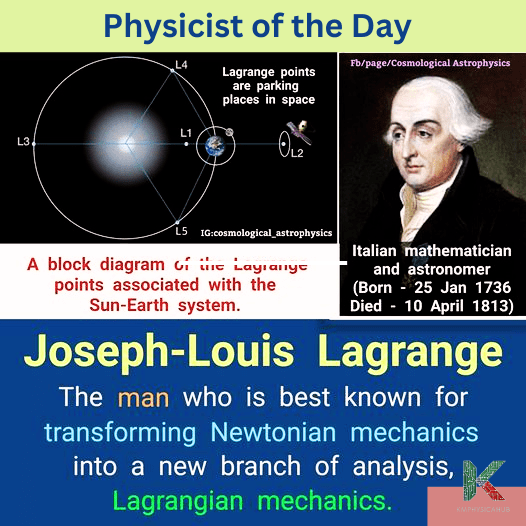
Perturbation Theory and Feynman Diagrams:
QFT gives pictorial representation of interaction with the help of Feynman diagrams. These diagrams represent particle interactions and are essential for perturbative calculations. Perturbation theory helps us compute probabilities and cross-sections for particle interactions.
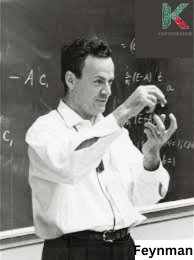
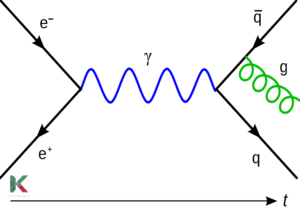
In this feynman diagram, an electron (e−) and a positron (e+) annihilate to form a photon (γ, depicted by the blue sine wave). This photon subsequently transforms into a quark–antiquark pair (quark q, antiquark q̄). Subsequently, the antiquark emits a gluon (g, illustrated by the green helix). To summarize, quantum field theory offers a robust framework for comprehending the behavior and interactions of particles, effectively linking classical and quantum physics.
Historical Development:
Quantum field theory is also known as QFT which was developed continually by theoretical physicists of the 20th century. There was also the problem of infinities in calculations, which was solved in the first successful QFT – quantum electrodynamics (QED), where interaction of light with electrons is described. Challenges included infinities in calculations (resolved by renormalization) and limitations in describing weak and strong interactions.
Applications:
QFT is foundational in particle physics, where it constructs models for subatomic particles. It is also used in condensed matter physics to describe quasiparticles (for instance, phonons, excitons). In the Particle Physics, the Standard Model of particle physics stems from QFT.
In conclusion, one can state that quantum field theory is capable of properly describing the current observations as a blend of quantum and classical physics.
-
String Theory:
The theory that posits that particles are minute oscillating strings, the string theory is in search of unification of all forces inclusive of the gravitational force. However, it remains theoretical without experimental confirmation.
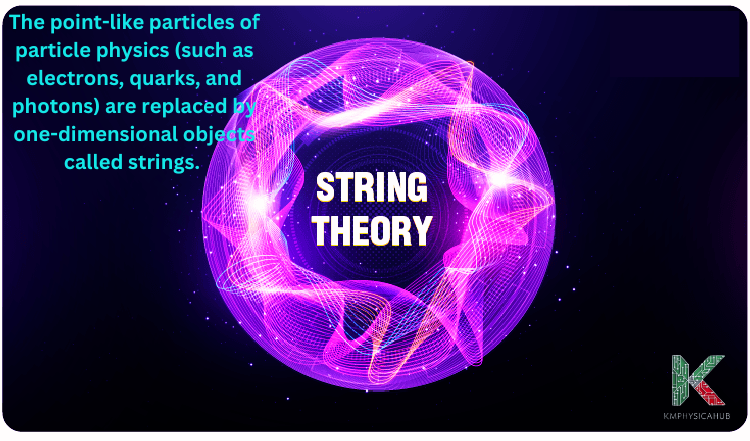
What Is String Theory?
String theory is a conceptual model designed to integrate the two major components of current physical theories: these are the quantum mechanics and general relativity. In this model, the particles like Electrons, Quarks and Photons and so on are not considered as point like particle but as 1-dimensional objects called strings. These strings vibrate and move through space, and thus create matter and space-time itself in the process.
Key Concepts:
- Vibrating Strings:
Imagine tiny, fundamental strings oscillating at different frequencies. Each vibrational mode corresponds to a different particle (e.g., a photon or a graviton).
- Extra Dimensions:
String theory requires more than the usual three spatial dimensions (length, width, height). It posits additional compact dimensions (curled up and hidden from our perception).
- Consistency Conditions:
String theory imposes stringent consistency conditions on the allowed vibrational modes. These conditions ensure that the theory is mathematically consistent and free from inconsistencies.
- Dualities:
String theory exhibits remarkable dualities, connecting seemingly different theories.
For example: T-duality relates strings in a compactified space with different radii. S-duality connects weakly coupled and strongly coupled regimes of the theory.
- Unified Framework:
It brings all the four fundamental forces of the world into a single structure including gravity force, electromagnetic force and both nuclear forces; the strong and the weak nuclear force. It gives what can be seen as a solution to the problem of the search for the theory of everything (TOE).
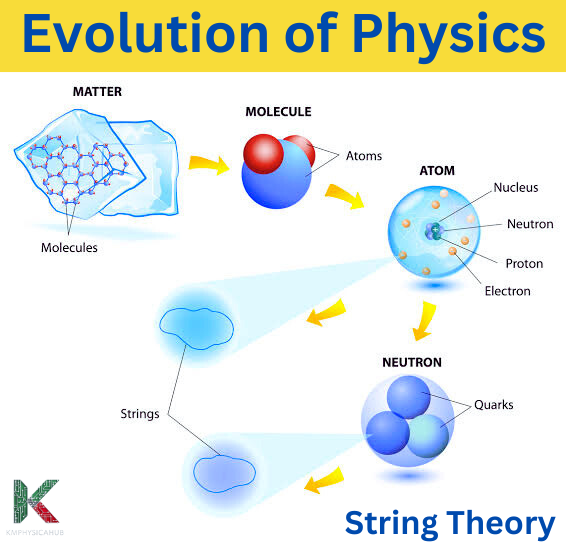
Challenges and Open Questions:
- Lack of Experimental Evidence:
String theory remains largely theoretical due to the lack of direct experimental verification. The energy scales required to probe strings directly are far beyond current technology.
- Landscape of Solutions:
String theory has an enormous “landscape” of possible solutions. Finding the specific solution that describes our universe remains an open challenge.
- Nature of Extra Dimensions:
The nature and size of the extra dimensions are still unknown. Some string theories predict a multitude of possible compactifications.
- Non-Perturbative Effects:
String theory involves non-perturbative effects that complicate calculations. These effects become significant at strong coupling regimes.
- Emergent Space-Time:
String theory suggests that space-time itself emerges from the interactions of strings. Understanding this emergence is a profound puzzle.
Potential Applications:
- Black Holes and Information Paradox:
String theory may resolve the information paradox related to black holes. It suggests that black holes have a microscopic structure governed by strings.
- Cosmology and Early Universe:
String cosmology is a type of cosmology that is concerned with how the universe behaves close to the Big Bang. It answers questions that one would pose to the Universe, such as the inflationary phase, cosmic strings, and initial singularity.
- AdS/CFT Correspondence:
One notable idea in string theory is the AdS/CFT duality, which relates the physics of string theory in anti-de Sitter (AdS) spacetime to the behavior of certain conformal field theories (CFTs) on its boundary. These two views prove usefulness in different domains – string theory and the physics of condensed matter.
All in all, string theory is one of the most ambitious attempts to reconcile the fundamental forces of the universe and explain the nature of the cosmos. It remains unproven experimentally however its mathematical beauty and its future implications to phenomena provokes the physicists and theorizers globally.
-
Astrophysics and Cosmology:
Observational astronomy has moved forward with significant knowledge and discoveries of the evolution of the universe, dark matter and the dark energy Let’s explore astrophysics and cosmology deeply:
Astrophysics:
Definition: It is defined as the branch that seeks to understand the physical properties, behaviors, and processes of objects and phenomena in the universe.
Scope:
- Stellar Astrophysics: Studies the stars, their dies, nuclear processes, and energy generation processes.
- Galactic Astrophysics: Investigate galaxies of the universe and their formation, movement, and interactions.
- Extragalactic Astrophysics: Discuss structures that exist larger than individual galaxies including clusters of galaxies, active black holes in galaxies, and cosmic webs.
- High-Energy Astrophysics: Explores some of the harshest conditions of neutron stars, black holes and active galactic nuclei.
Key Topics:
Nuclear synthesis, novas and supernovas, disk formation and many topics in astroPhysics inclusive of radio and cosmic rays and space dust.
Example: Want to know how the giant stars quickly go supernovae and spread big chunks of heavy elements across the cosmos.
Cosmology:
Definition: It is defined as the branch of astrophysics; it explains the structure, formation, development, and ultimate future of the universe as a whole.
Key Questions:
- How did the universe begin? What is its overall shape and composition?
- What role do dark matter and dark energy play?
- How did galaxies and galaxy clusters form?
Topics:
- Big Bang Theory: Describes how the universe came to be and its inception from singularity and the condition of the universe at Big Bang.
- Cosmic Microwave Background: The afterglow of the Big Bang.
- Dark Matter and Dark Energy: Essential elements that form the popular constructs.
- Large-Scale Structure:There are clusters, voids, and cosmic web which describe the structure of the universe.
- Example: Investigating the cosmic microwave background to understand the early universe.
In summary, astrophysics explores the details of celestial objects, while cosmology explores the grand design of universe. Together, they unravel the mysteries of space, time, and existence.
Books on Physics:
In his book written with Leopold Infeld, “The Evolution of Physics: The Growth of Ideas from Early Concepts to Relativity and Quanta,” Albert Einstein recounts the history of physics, emphasizing the need for objective reality, along with a call for field theories.
To sum up, the development of physics can be described as a continuous progression from the initial stage of simple observations that even the ancients made to such advanced theories as those of the present century. Its impact extends beyond scientific curiosity, shaping technology, engineering, and our understanding of the cosmos.
The Cosmic Tapestry Unraveled: Evolution of physics
Physics has remained our North Star— the luminous beacon that has led us to the understanding of the universe. Physics is the basic science and the foundation on which our knowledge is built. From the earliest musings of ancient philosophers to the intricate symphony of quantum strings, let us reflect on the chapters of this remarkable odyssey:
Ancient Echoes:
In the sun-kissed courtyards of Athens, Aristotle pondered the elements—earth, air, fire, and water. His natural philosophy laid the groundwork for centuries to come. The Pythagoreans whispered secrets of harmonious ratios—the music of the spheres—while Archimedes leveraged levers and pulleys to move the world.
Newton’s Celestial Dance:
Enter Sir Isaac Newton, the alchemist of mathematics. His Principia Mathematica unveiled the laws of motion and universal gravitation. Apples fell, planets orbited, and the cosmic ballet unfolded—an elegant choreography of forces and trajectories.
Einstein’s Relativistic Vision:
In the early 20th century, understanding of space-time was pictured by Einstein through his theory called “theory of relativity”. This theory explained curvature of space-time and deflection of light by massive objects.
Quantum Whispers:
Quantum mechanics tiptoed onto the stage, defying classical certainties. Particles blurred, waves collapsed, and uncertainty reigned. Schrödinger’s cat both lived and died, entangled in a quantum waltz.
Strings of Destiny:
String theory emerged—a cosmic symphony woven from vibrating strings. These minuscule harmonics sang of extra dimensions and hidden realms. The cosmic blueprint unfolded, revealing black holes, wormholes, and cosmic strings—the cosmic loom at work.
Cosmic Puzzles and Dark Enigmas:
Cosmology beckoned—a cosmic detective story. The Big Bang echoed, and the cosmic microwave background whispered secrets. Dark matter cloaked itself, and dark energy tugged at the cosmic seams.
The Unfinished Overture:
Thus, as we move into the twenty-first century, our journey in space goes on. We look for the TOE—the Theory of Everything—a code that interprets the universe and everything in it from the gravity to electromagnetism and even the quantum world. Maybe it is concealed in the resonance of strings or in the sonar of cosmic waves.
So, fellow cosmic travelers, let us raise our telescopes and particle accelerators. Let curiosity be our compass, and wonder our North Star. For the cosmic tapestry remains unfinished—a canvas awaiting our brushstrokes, our equations, our dreams.
And as the universe pirouettes through time, remember: We are stardust, woven into the very fabric of spacetime. Our quest—to unravel the cosmic code—echoes across epochs, across galaxies, across the cosmic expanse.
FAQS
Q1: Who is the father of ancient Physics?
Answer:
- Aristotle: The father of ancient physics
Aristotle is considered the father of ancient physics. In his elaborate classification Aristotle made it clear that everything was composed of four elements: earth, water, air and fire. More qualitative than quantitative, his theories were a starting point for systematic research of the natural world.
Q2: Who is the father of classical Physics?
Answer:
- Newton: The father of classical physics
Galileo, Kepler, and Descartes were the thinkers on whose ideas Newton(also called the father of classical physics based his laws of motion and universal law of gravitation. He united terrestrial mechanics with celestial mechanics in Principia Mathematica; or The Mathematical Principles of Natural Philosophy which also narrates the famous story about an apple falling from a tree that led to the discovery of gravity. Furthermore, Newton made major contributions in optics as well as independently inventing calculus alongside Leibniz.
Q3: Who is the father of modern Physics?
Answer:
- Einstein: The father of modern physics
Einstein changed our perception of space, time and energy in a revolutionary way thus earning him the title “The Father Of Modern Physics.”By coming up with special and general theory of relativity where he challenged the long held beliefs regarding newtonian mechanics that had gone unquestioned for centuries. These theories redefined reality itself by showing that space and time are interwoven but also relative to the observer’s motion. Additionally, his research on photoelectric effect laid foundation for quantum mechanics which is an essential part of contemporary physics.
Q4: What is the difference between ancient and classical Physics?
Answer:
Ancient Physics (roughly pre-600 AD) sets the stage. It’s observational, philosophical. Think of the Greeks like Aristotle pondering the nature of motion or the Babylonians meticulously charting the stars. They lacked the tools for rigorous experimentation but laid the groundwork with keen observations and questions.
Classical Physics (roughly 1600s-1900s)truly set the stage! The era was initiated by Galileo with his experiments, such as the famous anecdote of dropping objects from the Leaning Tower of Pisa. Newton stepped in with his laws of motion and gravity. Furthermore, we gained a unified understanding of electricity and magnetism through Maxwell’s equations.
Q5: What is the difference between modern and contemporary Physics?
Modern Physics (early 20th century) is where the play takes a dramatic turn! The very fabric of our understanding of space, time, and energy is challenged. Planck ushers in the baffling world of quantum mechanics—energy isn’t continuous but comes in discrete packets, quanta! Then Einstein, with a flourish and his theory of relativity, shows us that space and time are not absolute but intertwined, a cosmic dance!
Contemporary Physics (late 20th century-present) is the act still being written. We break down nuclei by smashing atoms against each other looking for fundamental particles composing matter. Using general relativity we study black holes and search for traces left behind by Big Bang itself while exploring universe at same time! It’s dynamic erratic brimming full unanswered riddles noting but ever changing nature physics.
Q6: What are the two biggest unsolved mysteries in Physics?
Answer:
Dark Energy and Dark Matter’s Riddle: Multiple experiments have confirmed that there must be a lot more mass in the cosmos than meets the eye because otherwise stars would not hold together. What are these elusive entities? Are they particles, new forces, or something even more exotic? The curtain remains drawn!
The Arrow of Time: Why does time seem to flow in only one direction? Can we reverse it? This fundamental question about the nature of time itself continues to baffle physicists.
